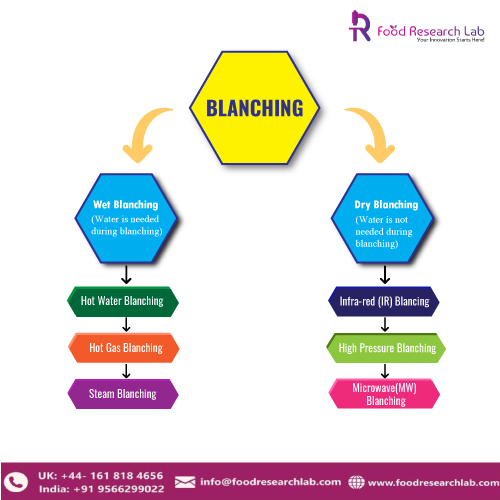
Blanching Of Fruits and Vegetables
Blanching is a cooking procedure in which a food item, generally a vegetable or fruit, is scalded in boiling water, withdrawn after a brief, timed interval, and then plunged into frozen water or positioned underneath cold running water to stop the cooking process (also known as shocking or refreshing).
Blanching is done in a water bath or a steam chamber at 100 °C (212 °F) for two to five minutes. Because steam blanchers utilize so little water, great caution must be exercised to ensure that the product is evenly exposed to the steam. Leafy vegetables are tough to steam blanch because they tend to cluster together. Peroxidase is the residual activity of an enzyme, and it is commonly used to assess the efficiency of the blanching process.
Blanching is a heat treatment applied to vegetable tissues before freezing, drying, or canning. Blanching is used before canning for various reasons, including cleaning the product, lowering the microbial load, releasing any trapped gases, and wilting the tissues of leafy vegetables so they may be readily placed into the containers. Blanching also inactivates enzymes that cause food to deteriorate while stored in the freezer.






